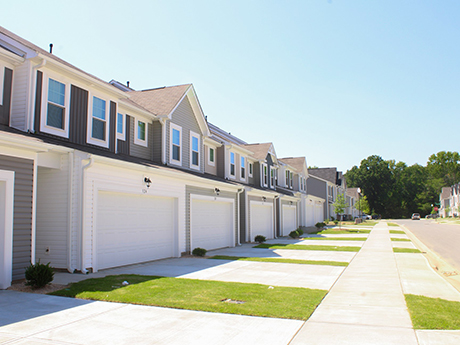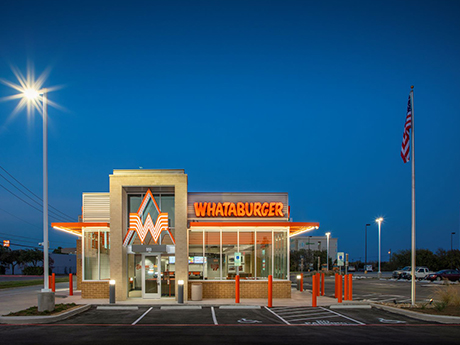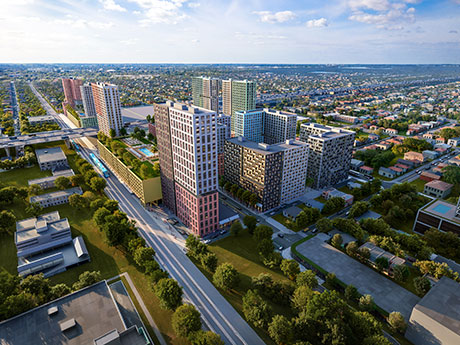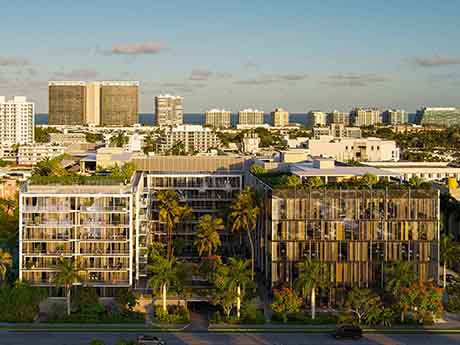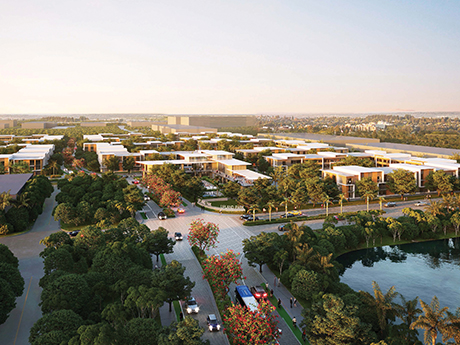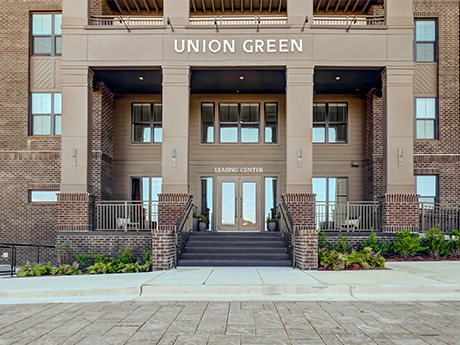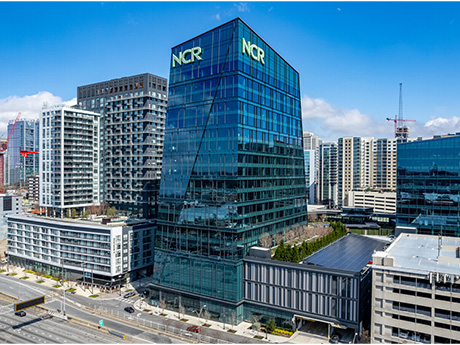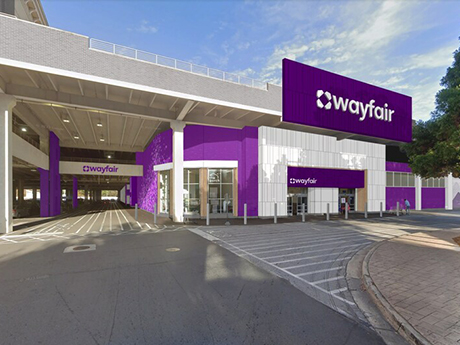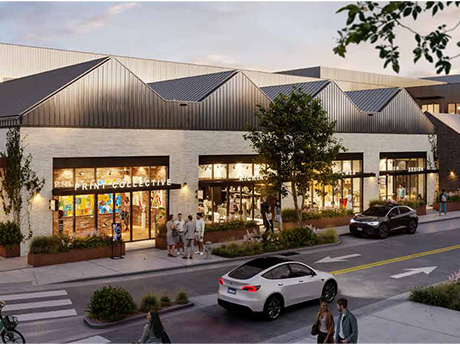Charlotte’s multifamily market is turning a corner after a once-in-a-generation supply wave that introduced 19,000 new apartments into the metro area in 2024. While rent growth will be muted for most of the year as the market continues to absorb the new supply, the dynamic will shift toward the end of 2025, putting landlords back in the driver’s seat. Record-low new apartment starts this year, combined with steady population growth and an economic climate that favors renting over owning will boost leasing activity in the second half of the year — and may even produce rent growth for the first time since 2022. Fundamentals in play Like many other Sun Belt cities, Charlotte has been on a joyride of growth stemming from in-migration since the COVID-19 pandemic. The city’s population expanded 2.2 percent between 2023 and 2024, making it one of the fastest-growing markets in the Southeast. Another 56,000 new residents are expected to move in by the end of the year, according to research from Berkadia. The long-term forecast for population growth is even rosier: the Charlotte Regional Business Alliance forecasts the metro population will surge by 50 percent over the next 25 years, driving demand for housing. Tariff …
Southeast Market Reports
Charlotte: “The Queen City” named after Queen Charlotte, wife of George III, has been on a tear post-COVID with new and expanding retail concepts. Vacancy rates have hovered under 4 percent the last few years, with little signs of changing , according to research from Institutional Property Advisors (IPA). Much of that vacancy has occurred in less desirable markets, or in junior and big-box bankruptcies (JOANN, Big Lots, Party City, etc.) that are being snatched up as quickly as they become vacant. Tenants are desperate and clamoring for new locations to keep up with the strong residential growth (24,000+ new residents in the city limits in 2024 and 46,000 in the CSA), making charlotte the 14th largest city in the country, and 19th-largest CSA in terms of overall population. This factor combined with unemployment hovering in the low 4 percent range, plus household income growth has called for desperate measures to ID new space or weakness in the market. We as local experts have seen a slight uptick, over the past 12 months, in some “shadow inventory.” This occurring when an existing retailer or restaurant might be struggling with sales, or in partial default, and the landlord has the opportunity …
This year marks the centennial of several Miami municipalities, including Coral Gables and Hialeah, placing Miami-Dade County in a unique position: looking back on a rich history as a sunseeker’s playground, while charging full speed into a future where it is also a tech hub and financial powerhouse, with some dubbing the city as “Wall Street South.” From the first land rush in the 1920s to the post-pandemic migration surge a century later, Miami’s real estate story includes fascinating characters, iconic architecture, multiple booms and busts and not one but two great railroad eras — all contributing to the city’s allure as a place to live, and where institutional-quality capital is increasingly eager to invest. Population, job momentum Miami has enjoyed one of the strongest multifamily markets in the country for roughly the past decade. A blend of population growth and job creation forms the backbone of Miami’s resilient rental market. Miami-Dade County added over 64,000 net new residents as of July 2024, driven almost entirely by international newcomers. According to the U.S. Census Bureau, the county saw 123,835 international arrivals, offsetting the 67,000 locals who left. Behind that growth is an unprecedented business boom. Lured by Florida’s business-friendly environment …
Over the past five years, the national office market has faced its fair share of challenges: hybrid work reshaping demand, a surge in sublease spaces and rents stagnating in many cities. But Miami’s office market? It’s been a standout performer, and it’s soaring, not just holding its ground. From the onset of the COVID-19 pandemic, Miami began to separate itself from other major metros. While cities across the country struggled to coax tenants back to the office, Miami became a hotspot for companies eager to expand. What began as an influx of interest from financial firms, law practices and tech companies quickly evolved into a significant shift. These weren’t temporary moves — these were long-term leases and major investments. Since 2020, Miami-Dade has absorbed nearly 3 million square feet of office space. Unlike other cities where growth has fluctuated, Miami’s demand has been steady. Even as leasing slowed down nationally in 2023, Miami managed to hold strong. By 2024, leasing activity picked up again, and the first quarter of 2025 saw impressive absorption numbers. A major factor in Miami’s success is its disciplined approach to office development. While other markets overbuilt, leading to high vacancy rates, Miami’s new supply has …
South Florida remains one of the most attractive markets for multifamily investment in the United States, driven by population growth, job creation and limited rental supply. While 2024 saw slower transaction volumes, fundamentals suggest a rebound is coming in 2025. This article explores trends in investment sales, debt capital markets and joint venture (JV) equity, highlighting how strategic structuring and strong relationships are driving activity in today’s selective capital environment. Poised for sales growth Miami’s multifamily market continues to thrive, fueled by population growth, high rental demand and major developments. The city’s job market, with an unemployment rate of just 2.4 percent, is expected to grow by over 18,000 positions in 2025. Corporate expansions — like Citadel, MSC Group, Nvidia, Microsoft and Shopify — have driven demand for luxury rentals, while vacancy rates remain under 5 percent. With home prices rising over 70 percent in the past five years and mortgage rates more than doubling, homeownership is out of reach for many. As a result, demand for luxury rentals remains strong, especially in suburban areas where transit-oriented developments are emerging. One standout is Terra’s $1 billion Upland Park in West Miami-Dade County. In partnership with the county, the project includes …
Five years after the world shut down, the national multifamily market is still on a roller coaster ride. After the highs of 2021 quickly turned into the lows of 2023, the dust settled in 2024. Today, the market has begun to reactivate while continuing to grapple with the aftereffects of the run-up. While national multifamily transactions soared 22 percent in 2024, Atlanta transaction volume was flat year-over-year as the investment community shifted a favorable view of Atlanta toward ambivalence. Perceptions surrounding new supply and non-paying tenants contributed to the city falling out of vogue with some investors, but Atlanta is a resilient market. With new deliveries having peaked in 2024 and property-level fundamentals rapidly turning the corner, Atlanta may be beaten up, but the light at the end of the tunnel is coming into focus: Atlanta is still a long-term winner. Days of peak supply are over While Atlanta experienced a record 24,000 units delivered in 2024, that figure represents just 4 percent of its total inventory. When compared to other Sun Belt markets like Charlotte (10 percent of total inventory delivered in 2024), Nashville (8 percent) and Dallas (5 percent), the number doesn’t seem as jarring. Looking ahead to …
Tenants are battling it out for Atlanta’s top-tier office space as trophy availability tightens and new office construction draws to a halt. With no end to the flight-to-quality trend in sight, Class B assets accounted for a whopping 70 percent of the market’s overall negative absorption (-736,682 square feet total net) in the first quarter of 2025, while Trophy assets recorded positive absorption (+114,579 square feet). Furthermore, office buildings that delivered between 2016 and 2021, which amount to almost 14 million square feet of space, currently average 92 percent occupancy. This underscores the growing divide between the haves and have-nots in Atlanta’s office market. Premium space in demand As office leasing activity reaches its highest level since 2019, decision-makers face a rapidly evolving landscape where securing the right space requires a highly motivated and strategic approach. With rising attendance mandates, workforce expansion and a limited supply of premium office space, competition for the best locations is intensifying. In Atlanta, submarkets like Midtown and Central Perimeter continue to outperform. Mini submarkets surrounding mixed-use districts like Avalon and The Battery (i.e. “urban-edge” in the suburbs) are also in high demand among tenants craving walkability and upscale amenities in the metro’s most sought-after …
The last four quarters in the Atlanta industrial market were something akin to a good old-fashioned roller coaster ride at the historic Southeastern Fairgrounds! The absorption, activity and new construction sectors all went for a somewhat bumpy ride this past year. What’s happening? First, the quarterly absorption numbers for the Atlanta industrial market have been anything but steady. Eight quarters ago there was 7.9 million square feet of positive net absorption, followed by five negative quarters in a row (totaling 13.2 million square feet), then came two positive quarters (totaling 7 million square feet) and then back down to 2.8 million square feet of negative net absorption for the first quarter of 2025. The annual absorption numbers were up and down as well. The last four quarters yielded 2.2 million square feet of positive net absorption, but a year ago, at this same time, the absorption numbers plummeted down to a negative 11.3 million square feet. Two years ago, the industrial market experienced 32.5 million square feet of positive net absorption. Second, the activity numbers also were up and down. The second quarter of 2024 recorded 14.4 million square feet of activity, but that number dropped to 13.6 million …
Atlanta’s retail market is proving it knows how to adapt, evolve and outperform, even in the face of macroeconomic headwinds. Despite a moderation in leasing and investment sales activity in recent quarters, the city’s fundamentals remain strong. Vacancy rates are at historic lows, rent growth is outpacing the national average and population and income growth continue to fuel long-term demand. Demand and demographics With vacancy rates consistently under 4 percent, Atlanta remains one of the tightest retail markets in the country. The appetite for well-located retail space hasn’t waned, even as broader economic uncertainty has slowed transaction velocity. In fact, strong absorption numbers and a limited supply pipeline have bolstered landlord confidence and pricing power across the metro. What’s driving this resilience? A booming population, rising household incomes and a steady influx of corporate relocations. Employers like Microsoft, Google and Cisco are expanding their footprints, bringing with them jobs, workers and spending power. Some of this growth has been particularly noticeable in Midtown. Redevelopment playbook Instead of ground-up development, Atlanta’s growth strategy has increasingly focused on reinventing aging retail centers in prime locations. With construction costs high and land increasingly scarce, developers opt to reimagine what already exists. These projects …
Nashville’s office market is navigating a transformative period as the city evolves into a national powerhouse for commerce, culture and corporate investment. Fueled by continued population growth, economic diversification and a wave of new developments, Nashville remains an attractive and resilient market despite headwinds in the broader commercial real estate landscape. Economic trends Nashville’s economic landscape continues to shift in ways that support long-term office market vitality. Population growth: One of the fastest-growing cities in the United States, Nashville continues to benefit from a steady influx of new residents. The expanding talent pool is a major driver of office demand as companies look to establish or expand their footprint in a market rich in skilled labor and cultural vibrancy. Diversifying economy: While music and healthcare have long been economic cornerstones, the city is now seeing strong momentum in sectors like technology, finance, professional services and logistics. These industries bring high-paying jobs and are increasingly seeking high-quality office space that reflects their evolving workplace needs. Return-to-office strategies: Like many U.S. markets, Nashville has witnessed the rise of hybrid work models. However, rather than diminishing the importance of the office, this shift is redefining its role. Employers are focused on right-sizing their …
Newer Posts


